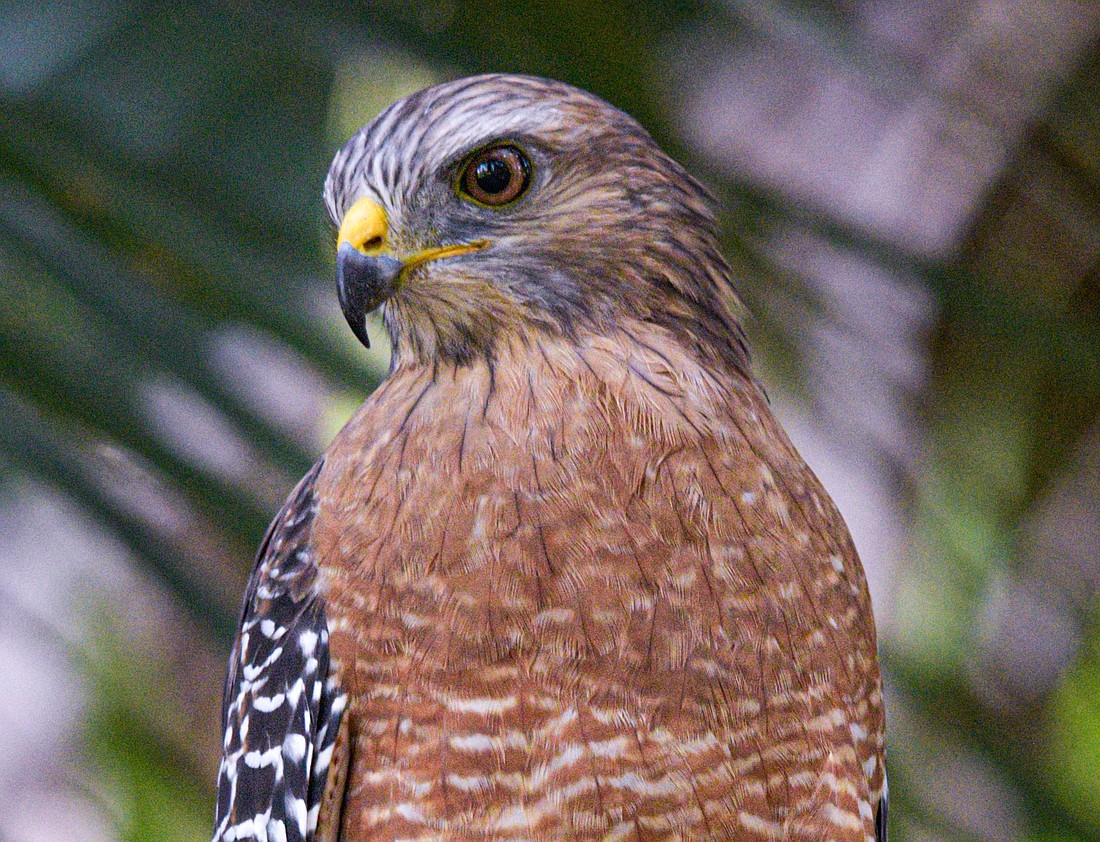- December 4, 2025
-
-
Loading

Loading

The most abundant and widely found hawks in Florida, red-shouldered hawks are named for their reddish upper wing coverts, or shoulders. Feeding primarily on small rodents, amphibians, and reptiles, they typically hunt from a perch in the forest understory, or fly low through woodlands, pouncing on their unsuspecting prey in a surprise attack.
In urban settings, they've adapted to hunt from power lines, where you'll often spot them, high above roadways, in quest of their next meal.
Red-shouldered hawk populations declined in the early 20th century because of hunting, DDT poisoning and habitat loss to deforestation. With protection by the Migratory Bird Treaty Act, the banning of DDT, and reforestation, their numbers recovered, though they remain vulnerable to collisions with cars (when flying low across roads after prey) and power lines.
Red-shouldered hawks are also threatened by metals and other poisons in our environment. Of specific concern are pest-control anticoagulants and other poisons that do not kill rodents immediately, but rather slowly weaken them, thus making them easier prey for red-shouldered hawks and other raptors. Ingesting the poisoned rodents has disastrous consequences for wildlife.
Poison use in our environment can actually exacerbate pest infestations, as it threatens our native rodent-controllers, including red-shouldered hawks, that normally keep rodents in check. To protect our wildlife, we can opt to use preventative pest-control practices, such as rodent-proofing human structures, trimming foliage and tree limbs away from sides and roofs of houses and reducing rodent attractants (such as trash, pet food, spilled birdseed and fallen
fruit).
Finally, for non-toxic rodent control as well as fantastic bird watching opportunities, consider installing an owl nesting box.
Save our Seabirds is a non-profit organization whose mission is to rescue and rehabilitate sick and injured birds, releasing as many as they can, while educating our community about avoiding injuries and preserving habitats.